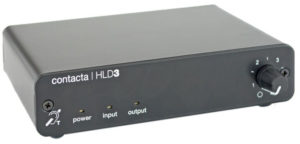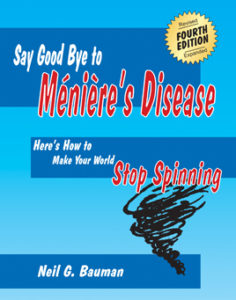by Neil Bauman, Ph.D.
A mother wrote:
My son’s genetecist recently concluded that he has Pendred’s Syndrome. I’m a little sketchy on how they came to that conclusion. When I mentioned that because of the results of his CT scan, he was diagnosed with LVAS, she didn’t know much about it. I’m wondering what, if any, correlation exists between them.
I read on-line the following, “The SLC26A4 gene encodes an anion transporter known as pendrin and is the gene mutant in Pendred syndrome (PDS; 274600), DFNB4 (600791), and enlarged vestibular aqueduct syndrome (EVA; 603545).” If a mutation on that particular gene is for Pendred and/or LVAS, how do they know that you have Pendred and not just LVAS?
Good question. I am not a geneticist, but this is my understanding on the subject.
There are three conditions that all result from the mutation of the same SLC26A4 gene. Thus in one sense, they are all just different manifestations of the same thing.
If the mutation of the SLC26A4 gene results in developmental abnormalities in the cochlea, a sensorineural hearing loss and thyroid problems (goiter), then they call it Pendred syndrome.
If the mutation of the SLC26A4 gene results in an enlarged vestibular aqueduct and sensorineural hearing loss and/or balance problems, they call it Large Vestibular Aqueduct syndrome.
If the mutation of the SLC26A4 gene results in non-syndromic sensorineural hearing loss (and goiter and LVAS are not noticeable) then they call it Sensorineural Non-syndromic Recessive Deafness. (Sometimes a goiter later develops and then they say, “Oh, it must have been Pendreds after all.”)
So for all practical purposes, these three are really one condition having several manifestations.
Look at it this way. In all cases there is a sensorineural hearing loss.
If, in addition, one of the manifestations is an enlarged vestibular aqueduct, then the diagnosis is LVAS.
Or, if, in addition, one of the manifestations is thyroid problems, then the diagnosis is Pendreds.
Or, if neither an enlarged vestibular aqueduct nor thyroid problems are evident, then the diagnosis is sensorineural non-syndromic recessive deafness.
However, a person could have both a thyroid problem and LVAS. Some doctors may simply diagnose this as Pendred syndrome, while others may mention that the person has LVAS.
Maybe it would be easier to understand if we lump all the above together and call it “SLC26A4 Gene Mutation Syndrome” and explain that this syndrome includes sensorineural hearing loss and may also include thyroid problems (goiter) and/or enlarged vestibular aqueducts.


